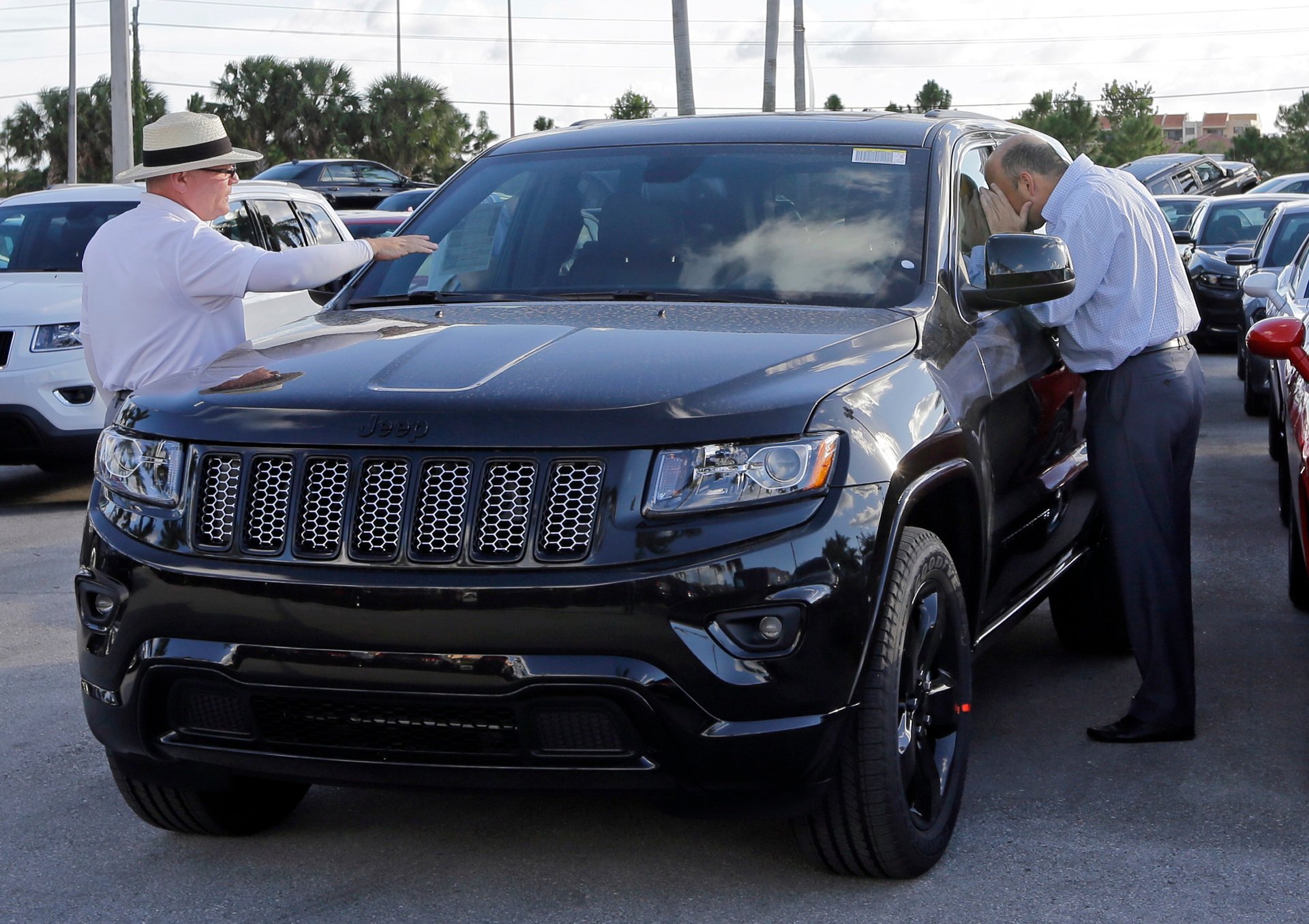By 2020, SUVs could make up 50% of US car sales
More and more drivers like riding high in new sport utility vehicles, a trend that is paying off big for automakers and taxing the resources of a warming world.


More and more drivers like riding high in new sport utility vehicles, a trend that is paying off big for automakers and taxing the resources of a warming world.
As the industry and consumers profess to be excited about electric vehicles, a growing number of drivers are ditching passenger cars for beefier, fuel-guzzling SUVs.
Automakers are going all in to bring an ever-greater variety of crossovers, trucks, and SUVs to market. They are eager to capitalize on rising demand with vehicles that are very profitable to sell—unlike loss-making EVs.
“SUVs are the growth engine behind the global auto market and we think there is little chance of this trend reversing,” Jeff Schuster, president of Americas and global vehicle forecasting at LMC Automotive, told Quartz. “Globally, we see SUVs closing in on 40% of the market by 2025. And from now until then, SUVs will account for nearly half of all new vehicles and redesigns.”
According to LMC, SUVs—just 15% of light vehicle sales globally in 2013—will account for 35% this year. In the US, where SUVs had a 32% share in 2013, they are projected to cross the 50% mark by 2020.
A bigger range of choices for living large
SUV buyers were on a tear in June, with trucks and crossovers boosting GM’s sales by 4.6% in the quarter. Fiat Chrysler’s Jeep brand had its best June ever, with a 19% surge in sales from the previous month.
European carmakers also saw the SUV boom boost their bottom lines. Those with new SUV models—like Volvo with its XC40 and Jaguar with the E-pace crossover—really reaped the benefits. For Honda and Toyota, SUV sales outstripped those of their passenger cars.
“Higher ride position, flexible interior space for passengers or cargo, improved fuel efficiency across the segment, as well as increased choice,” are what people love about SUVs, according to Schuster.
In the US, where pickup trucks and other off-road vehicles have a long heritage and really took off when they were built on car platforms. For years, cheap gasoline supported fueling big, powerful vehicles.
The environmental costs are growing
Schuster contends that the turn towards passenger cars’ chunky cousins does not necessarily signal a blatant lack of concern for the environment: “With the improvements in fuel economy and electrification…many of the newer models are more efficient than cars of just a few years ago.”
That view is disputed by environmental organizations. Peter Mock, managing director of the International Council on Clean Transportation Europe, told Quartz that, based on its research, “in general, it’s not true that a modern vehicle is necessarily more environmentally friendly than an old vehicle.”
“What we found was that in Europe, between 2015 and 2017, the market share of SUVs increased and that increase in SUV sales and the drop in sales in the medium [sized] segment led to an increase in CO2 emissions. Our conclusion was that it’s more the trend towards SUVs and towards bigger vehicles in general that is driving CO2 emissions up at the moment—not the diesel decline as manufacturers often claim.”
The trend towards SUVs is not good news for environment, says Mock, because they are always heavier than the normal-sized cars. “They have worse aerodynamics because they have a larger profile, logically you have to use more energy to drive the vehicle the same distance,” Mock said.
“What it means for manufacturers is that they have to put in more technology if they want to meet the same CO2 targets and that makes it more expensive—but of course manufacturers are making a great profit with SUVs and that’s why they like to sell them.”